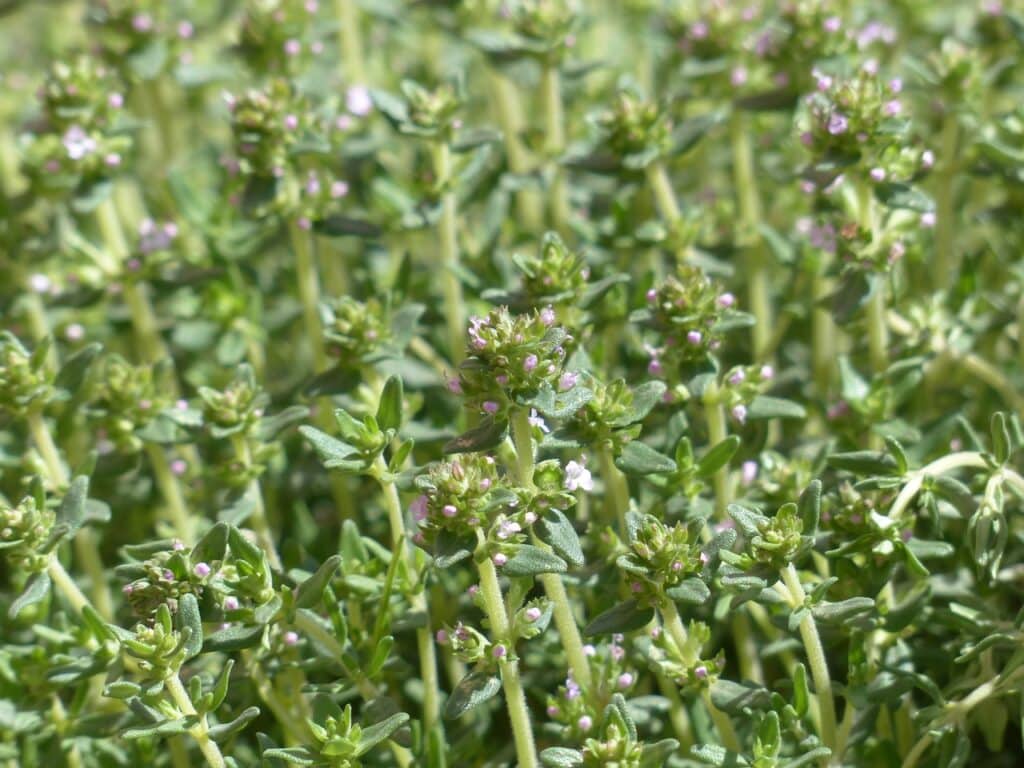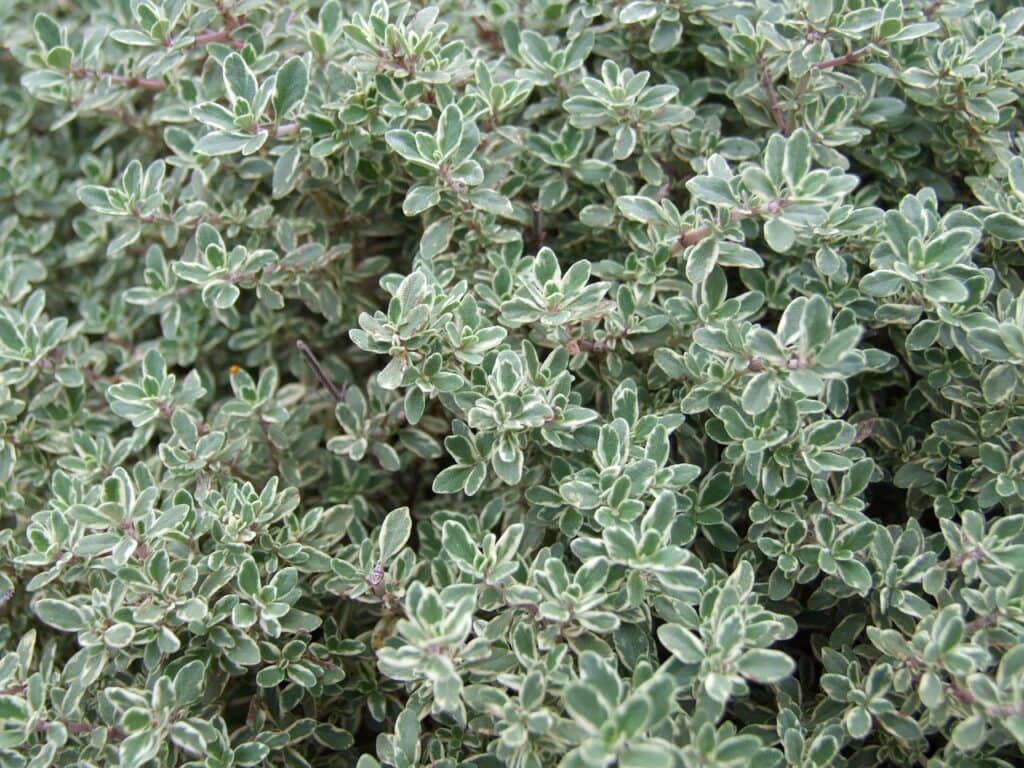How Much & How Often to Water Thyme: Tips, Factors, & FAQ
-
Pete Ortiz
- Last updated:

Thyme is a delicate plant with several uses. It’s one of those multi-functional plants which have all their parts useful. Thyme has dietary, medicinal, and ornamental uses, making it very beneficial to most homeowners. Growing thyme is easy, but it is important to know the right conditions. Thyme will only thrive where it is properly taken care of. Watering thyme is a delicate practice because either underwatering or overwatering can have negative effects.
Here we will discuss how much water a thyme plant needs and how often it should be watered.
History of Thyme
Thyme was used by ancient Egyptians as incense in temples, and it was also added to bathwater. It was seen to have strong healing powers, and when the “Black Death” took place in the 1350s, people wore wraps of thyme on different parts of their bodies. From there, thyme became popular and found applications in the culinary and ornamental sectors.
One notable thing about thyme is its diverse forms. No part of the thyme plant is without effective use. For instance, the leaves of thyme are frequently used for cooking. Thyme adds a rich flavor to meals. Also, thyme can be made into tea bags and used to make tea. The oil of thyme has applications in numerous materials, including scented soaps, deodorants, antiseptics, and insect repellents. The flowers and leaves are also used to cure cough and for other medicinal purposes.

Overview of the Thyme Plant
| Botanical name | Thymus Vulgaris |
| Family | Lamiaceae |
| Plant type | Perennial |
| Height | 40 cm tall |
| Native countries | Europe, North Africa, and Asia |
The thyme plant is narrow-stemmed. Most of the species have their leaves colored green. They are widely grown as herbs. The strong smell of thyme can be attributed to the presence of about 60% of thymol in thyme leaves. Thyme is best cultivated in the spring season, and it is known for its high drought tolerance. When thyme is dried, the flavor is preserved.
There are over 300 species of thyme. Most of these species prefer full sun and well-drained soil. The thyme plant does not like overly hot and humid weather conditions, and neither does it like overly wet conditions. Just ensure that the soil on which you plant thyme is well-drained, and it will thrive.
How Often Should the Thyme Plant Be Watered?
Watering is a basic requirement for the growth of every plant. The frequency of watering the thyme plant will depend on some factors like the climatic condition of the environment and the size of your plant.

The 4 Factors Affecting the Watering of Thyme
Here are some factors that affect how often the thyme plant is watered
1. The Size of the Plant
Is it still a seedling, or is it well-grown? Younger plants require a lot of water to grow. The best practice for young thyme plants is to water them less, more frequently, instead of watering them more, less frequently. Watering your seedlings daily is a good practice, but always check to see that the soil is not water-logged first.
2. Location of the Thyme Plant
Is it planted outside or inside? Thyme planted outside is generally healthier because it has direct access to sunlight and it gets a healthy dose of fresh air. Because it gets more soil, the soil might dry up faster, so this means that the thyme planted outside might need more water.
On the other hand, the plant inside gets a limited amount of sunlight and air. Therefore, you might need to water this plant more often. Always check the soil, and if it feels like it is saturated, there is no need to water it again.
3. Direct Planting
If the thyme is planted directly on the soil, it can get moisture from the ground, so it might need less water. If it is planted in a pot, then it cannot get water from the ground and might dry up faster and require more water.
4. Climatic Condition
During the rainy season, there might be no need to water the thyme plants often. In the summer, the reverse will be the case.
How Often to Water the Thyme Plant
During the summer, water the thyme once or twice a week. In the spring or fall seasons, when the temperature is not so extreme, the thyme plant can be watered about 2 to 3 times a month. If it is winter, then water the thyme once a month.
Remember that conditions can affect this schedule, so the best thing to do is check the soil before watering. It is best to let the soil dry out before adding more water to it.

How Much Water Does the Thyme Plant Need?
Thyme plants like water, but they do not like to be bogged down in it. They also do not like wet soil, so ensure that the soil is dried to an extent before adding more water. It is better to underwater than to overwater the thyme plant because underwatering can be fixed easier than overwatering.
Tips for Watering the Thyme Plant
- Thyme plants can wilt both when they are underwatered and when they are overwatered. Most times, wilting is a sign of poor watering practice.
- Ensure that pots are well-drained. If you are planting thyme in a pot, make sure that the drainage holes are enough to avoid waterlogging the soil.
- While watering the thyme plant, ensure that the moisture depth does not exceed 1 inch. Also, ensure that the depth is not less than an inch.
- Water the roots instead of the leaves. Remember that it is the root health that is more important.
Conclusion
Planting thyme is very rewarding. Thyme is one herb that always comes in handy for numerous purposes. Thyme is low maintenance and will barely stress the planter. Therefore, if you are considering planting thyme, then it is a good idea. Always remember to check the soil by physical inspection before watering it.
Featured Image Credit: Hans, Pixabay
Contents




